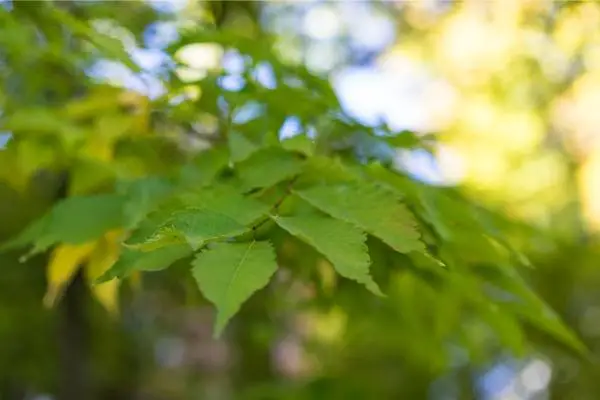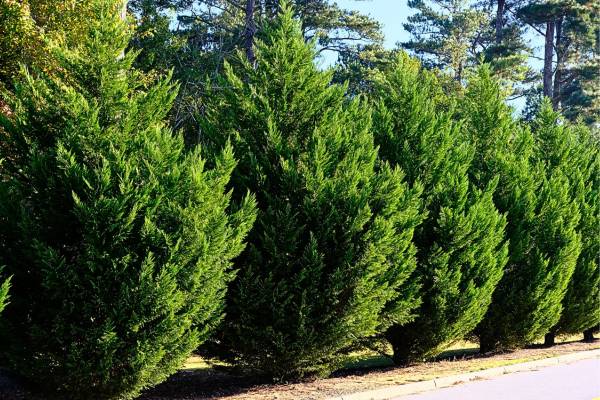Landscaping is an exciting venture that allows you to transform your outdoor space into a haven of beauty and tranquility. One crucial aspect of landscape installation is selecting the right trees. Trees not only add aesthetic appeal but also contribute to the overall well-being of the environment. In this guide, we’ll explore the factors to consider when choosing trees for your landscape and offer insights into five commonly asked questions to help you make informed decisions.
Climate Compatibility
Before you start dreaming about the perfect tree for your backyard, it’s essential to consider your local climate. Different trees thrive in different environments. If you’re in a hot and arid region, opt for drought-resistant species like the Desert Willow or Palo Verde. In cooler climates, consider deciduous trees like the Red Maple or Japanese Zelkova. Understanding your climate will ensure the longevity and health of your chosen trees.

Size Matters
While the idea of towering, majestic trees may be appealing, it’s crucial to consider the available space in your landscape TopDogsLandscape is the Greenville NC landscaping company that can help you with all the questions regarding the Tree selections. Large trees like Oak or Redwood can become overwhelming in a small backyard, causing issues with shade and potential damage to structures. Conversely, smaller trees like Dogwood or Crabapple are better suited for limited spaces. Plan for the future growth of your chosen trees to avoid overcrowding and maintenance challenges.
Maintenance Requirements
Not all trees demand the same level of care and attention. If you’re a hands-on gardener, you might enjoy the challenge of high-maintenance trees like the flowering Cherry or Magnolia. However, if you prefer low-maintenance options, consider trees like the River Birch or Crape Myrtle. Assess your willingness and ability to invest time in pruning, fertilizing, and dealing with potential pests when selecting trees for your landscape.
Purposeful Planting
Think about the purpose your trees will serve in your landscape. Are you aiming for shade, privacy, or visual interest? If shade is your priority, consider trees with broad canopies like the Oak or Maple. For privacy, evergreen options such as the Leyland Cypress or Arborvitae can create a natural barrier. Trees like the Japanese Maple or Flowering Cherry are excellent choices for visual interest due to their unique shapes and vibrant blooms.

Soil Composition
The type of soil in your area plays a significant role in the success of your tree-planting endeavor. Some trees prefer well-drained soil, while others thrive in moist or acidic conditions. Conduct a soil test to determine the pH and composition of your soil. Trees like the Bald Cypress or Sweetbay Magnolia are adaptable to a variety of soil types, making them versatile choices. Understanding your soil will help you choose trees that will flourish in your specific landscape.
Conclusion
Choosing the right trees for your landscape is a thoughtful process that involves considering your local climate, available space, maintenance capabilities, intended purpose, and soil conditions. By taking these factors into account, you can create a harmonious and sustainable outdoor environment that enhances the beauty of your home. Remember, trees are long-term investments, so choose wisely to enjoy the benefits for years to come.
FAQs
Can I plant any tree in my backyard, or are there restrictions based on climate?
Trees have specific climate preferences, and planting a tree that isn’t suited to your local climate can lead to poor growth and health. Research trees native to your region or those well-adapted to your climate to ensure successful landscaping.
How do I estimate the space a tree will need to grow without overcrowding my yard?
Consider the mature size of the tree before planting. Check the recommended spacing for the chosen tree species and ensure it aligns with the available space in your landscape. This foresight prevents issues related to overcrowding and ensures optimal growth.
Are there trees that require minimal maintenance?
Some trees are low-maintenance and well-suited for busy homeowners. Options like the River Birch or Crape Myrtle require less pruning and attention. However, it’s essential to understand the specific care needs of any tree you choose.
Can I plant trees close to structures like my house or garage?
While it’s possible to plant trees near structures, it’s crucial to consider the mature size and root system of the tree. Large trees with expansive root systems can potentially damage foundations. Research the mature size and planting recommendations to avoid future issues.
How do I determine the soil type in my yard?
Conduct a soil test to determine the pH and composition of your soil. Soil testing kits are available at garden centers, or you can hire a professional service. Understanding your soil type will guide you in selecting trees that will thrive in your specific soil conditions.
